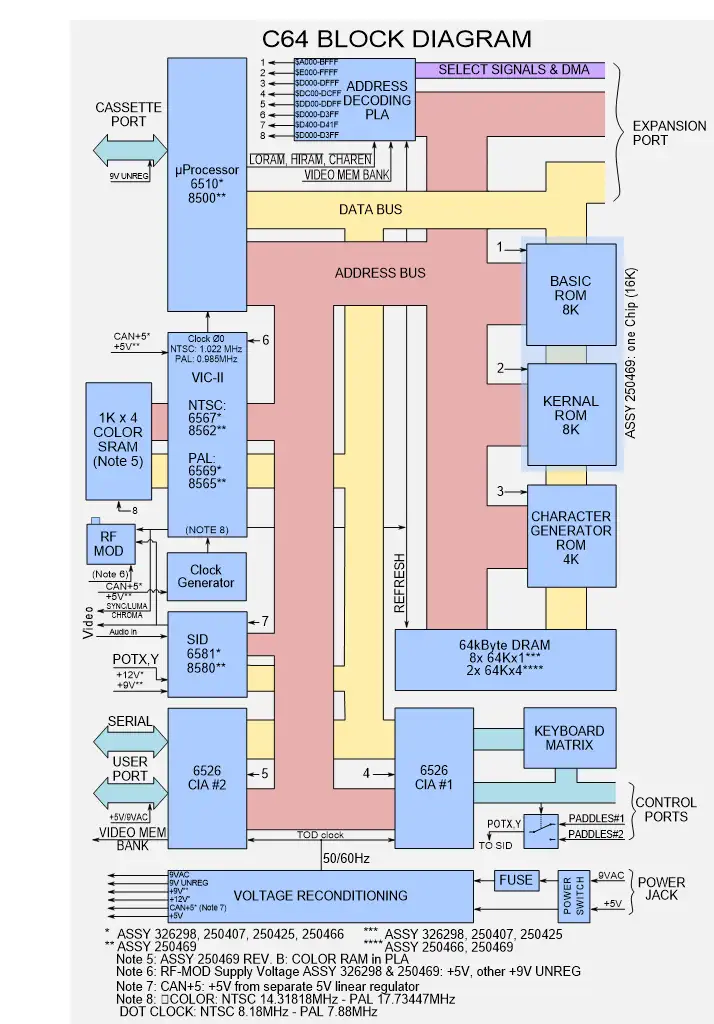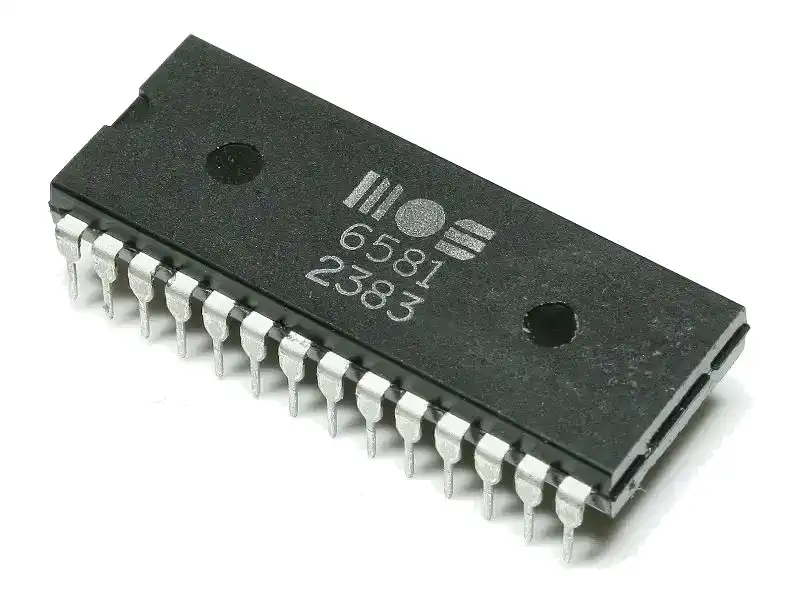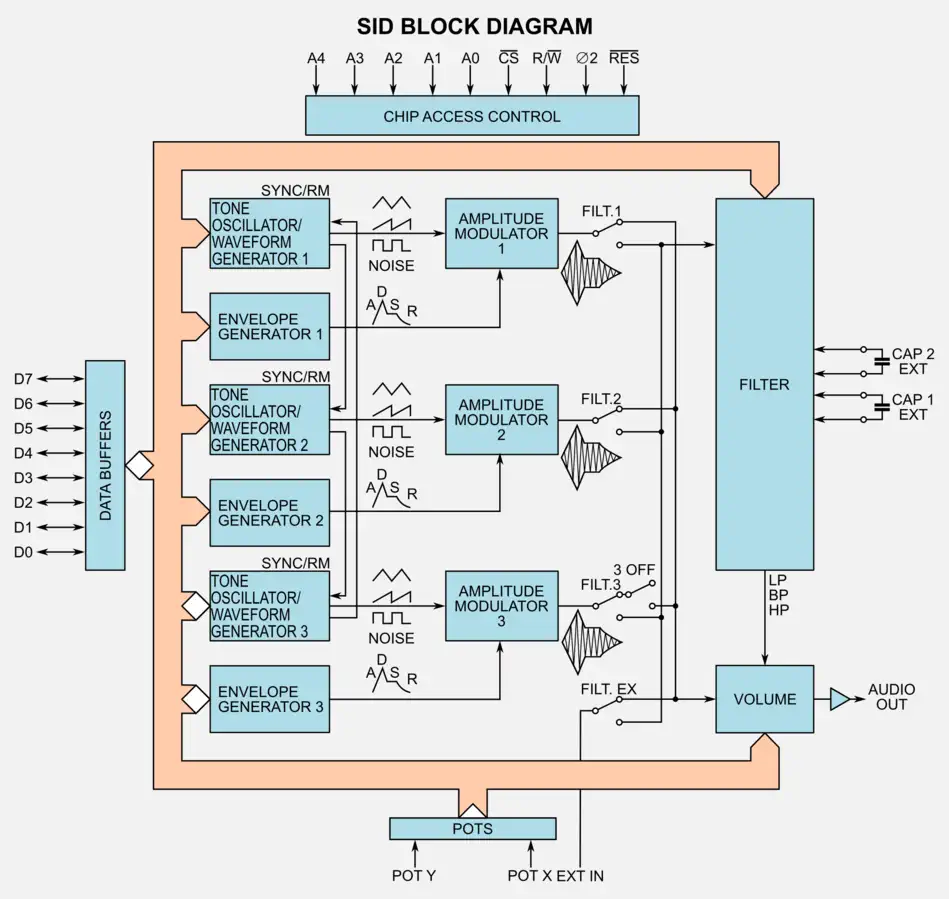
The Commodore 64 Game System
The Commodore 64 GS, or the 64 Game System, is basically a commodore 64 without a keyboard and peripheral ports. It was purely meant to capture some of the Console Market, by introducing a machine that could run ROM cartridges.
The Commodore 64 Computer
The Commodore 64, also known as the C64 or the CBM 64, is an 8-bit home computer introduced in January 1982 by Commodore International (first shown at the Consumer Electronics Show, January 7 thru 10, 1982, in Las Vegas). It has been listed in the Guinness World Records as the highest-selling single computer model of all time, with independent estimates placing the number sold between 12.5 and 17 million units.
Volume production started in early 1982, marketing in August for US$595 (equivalent to $1,596 in 2020). Preceded by the Commodore VIC-20 and Commodore PET, the C64 took its name from its 64 kilobytes (65,536 bytes) of RAM. With support for multicolor sprites and a custom chip for waveform generation, the C64 could create superior visuals and audio compared to systems without such custom hardware.
The C64 dominated the low-end computer market (except in the UK and Japan, lasting only about six months in Japan) for most of the later years of the 1980s. For a substantial period (1983 through 1986), the C64 had between 30% and 40% share of the US market and two million units sold per year, outselling IBM PC compatibles, Apple computers, and the Atari 8-bit family of computers. Sam Tramiel, a later Atari president and the son of Commodore's founder, said in a 1989 interview, "When I was at Commodore we were building 400,000 C64s a month for a couple of years." In the UK market, the C64 faced competition from the BBC Micro and the ZX Spectrum, but the C64 was still the second most popular computer in the UK after the ZX Spectrum. The Commodore 64 failed to make any impact in Japan. The Japanese market was dominated by Japanese computers, such as the NEC PC-8801, Sharp X1, Fujitsu FM-7, and MSX.

SID (MOS 6581) - Sound Interface Device
SID is short for Sound Interface Device. It is the name of the sound chip that was used in the VC10, the commodore 64 and the Commodore 128. SID was developed by Bob Yannes, an employee of MOS Technology. Bob was not only an engineer but also knew a lot about music. His intention was to create a different sound chip than other devices at the time. He implemented a subtractive synthesis chip. The chip's distinctive sound is easily recognized and was clearly ahead of the ocmpitition. The SID combines analog and digital circuitry that cannot be 100% emulated, even today.
Source: C64 Wiki

MOS Technology VIC-II
The VIC-II, or Video Interface Chip II, is a chip from MOS Technology. There are a few variants:
- For NTSC: 6567/8562/8564
- For PAL: 6569/8565/8566
The VIC-II generates Y/C signals and DRAM refresh signals for the Commodore 64, Commodore MAX, and Commodore 128 computers. It is the successor of the original VIC chip used in the VIC-20 computer.
Features:
- 16 KByte address space for screen, character and sprite memory
- 320x200 graphics in 16 colors
- 40x25 Text resolution
- Capable of 8 sprites per scanline (24x21 or 12x21 multicolor sprites)
- Raster interrupt
- Smooth Scrolling
- Independent DRAM refresh
- BUS mastering for the 6502-style bus. CPU and VIC-II can access the bus during alternating half-clock cycles.
Programmers quickly learned that the VIC-II was more capable than the specifications would indicate. By manupulating the 47 different control registers, and by using machine code hooked into the raster interrupt routine (or the scanline interrupt), the chip can be programmed to do sprite multiplexing. This allows for more than 8 concurrent sprites on screen. It basically allows for the screen to be split up in different slices, giving each slice its own scrolling, resolution, color and sprite properties. This even allowed programmers to use graphics outside the upper and lower borders of the screen.

MOS 6510 CPU
The 6510 is an 8-bit MicroProcessor designed by MOS Technology. It is a modified version of the very successful 6502. The primary change in the 6510 was the addition of an 8-bit general purpose I/O port, altbough only six I/O pins were available in the most common version of the 6510.
The extra I/O pins were used for various purposes. In the Commodore 64, they were used to control bank switching, the signal lines for the Datasette tape recorder.
Source:WikiPedia



